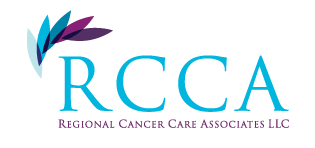- Advertise
- About OncLive
- Editorial Board
- MJH Life Sciences brands
- Contact Us
- Privacy
- Terms & Conditions
- Do Not Sell My Information
2 Clarke Drive
Suite 100
Cranbury, NJ 08512
© 2025 MJH Life Sciences™ and OncLive - Clinical Oncology News, Cancer Expert Insights. All rights reserved.
Unprecedented Changes in Oncology: Toward a New Dawn
"Are you making progress?" is one of the questions you are most frequently being asked as an oncologist-even in social settings.
Andre Goy, MD, MS
Editor-in-Chief of Oncology & Biotech News
Chairman and Director Chief of Lymphoma Director, Clinical and Translational Cancer Research John Theurer Cancer Center at Hackensack University Medical Center
“Are you making progress?” is one of the questions you are most frequently being asked as an oncologist—even in social settings. It is obviously beyond the capacity of this editorial to summarize the current status and future of oncology, but I would say in a nutshell that cancer care is undergoing unprecedented changes. Here are three items that really capture where we’re at and where we’re going in oncology:
- Thanks to a better understanding of cancer cell biology, as well as the human genome itself, we are starting to appreciate with derived high throughput technologies the daunting diversity of cancer at the molecular level (ie, cancer cells looking identical under the microscope but actually being “wired very differently,” and hence, behaving differently).
- It is estimated that we have about 5500 new drugs in the medical pipeline—two-thirds are in the oncology space—and most of them are considered small molecules or biologicals. The kinase inhibitors story in chronic myeloid leukemia (targeting BCR-ABL to treat the disease) is one of the best examples, but now there are also emerging small molecules targeting the B-cell receptor with response rates in excess of 80% in patients with relapsed/refractory B-cell malignancies— even in poor-risk patients who are refractory to chemotherapy.
- Finally, there have been tremendous advances with cell therapy, particularly in two areas: a) restoring the immune system in cancer patients by unlocking/unleashing the immune system by releasing negative checkpoints, ie, the PD-1 story (with impressive data in melanoma and lung cancer, for example) and b) CAR-modified T cells, which likely represent the most striking story in oncology in 2013, with durable remission in refractory CD19-positive lymphoma and leukemia.
Though the progress is coming—thankfully—from many directions, the pieces actually fall right into place together and will reshape the way we manage cancer. We will be able to stratify patients based on genomic data, ie, identify patients who will do well with standard therapies (regardless of their poor clinical prognostic factors at presentation), while offering new combinations to others. The primary goal will be to develop combinations of several small molecules or biologics (ie, multitargeting), then to shy away from cytotoxic therapies in the future. The ability to tailor the treatment of a given patient is by nature the launching of precision medicine, and it’s already palpable. Building on this strategy, I believe we will add targeted or interventional immunotherapy, either with antibodies to unleash the immune system or cell therapy through CAR-modified T cells to prevent recurrence. Though we are not there yet, we definitely will be in the future.
Following my January editorial on the Affordable Care Act, I received comments from a reader pointing out that we need a better evaluation of the actual benefit and costs of the current “incremental improvements” model in clinical trials and drug development. Currently trials frequently expose a whole population for a small benefit that might only be significant for only a fraction of patients. In this era of questioning/rationing care, it is important to embrace the future and its potential, as well as address the cost and benefit issue.
Along this line, the future of cancer care will definitely involve a bundled model—as long as we preserve outcome and quality. At Regional Cancer Care Associates (regionalcancercare.org), we have started this process through our outcome database (COTA), which captures patients’ clinical and molecular characteristics, as well as cost and outcome data. As part of COTA, we are also integrating research based on patients’ best stratification (eg, trials with a molecular rationale). This should help—as the same reader suggested following my last editorial— “identify the 3%-5% (or 10%-15%) of patients who are highly likely to benefit” and target the new treatment approach to that subset. Most drugs could then become “niche” drugs (maybe even across several organs), which could speed up the drug development process and hopefully, at some point, reduce cost. Prospective outcome databases such as COTA will also allow us to weigh/confirm a clinical benefit based on historical comparison of cases with similar characteristics.
Rationalized care and clinical trials are the way of the future for all of the above reasons. Clinicians and investigators need to double their efforts, as this will be transformative and beneficial to patients and will definitely help control the cost of cancer care. Investigators working on clinical trials are not only necessary to this process, but also commendable as their task becomes increasingly difficult due to the complexity of trials, worsening regulatory requirements, a frequent lack of support, and being a priori considered guilty of a suspicious relationship with industry. We need to work in a transparent but supportive environment with industry. A respected, responsible, and reciprocal partnership between investigators and industry (pharma and diagnostic companies) is necessary.
So yes, we are making progress! And the unprecedented changes occurring in cancer care definitely have the potential to bring a new dawn for oncology.


